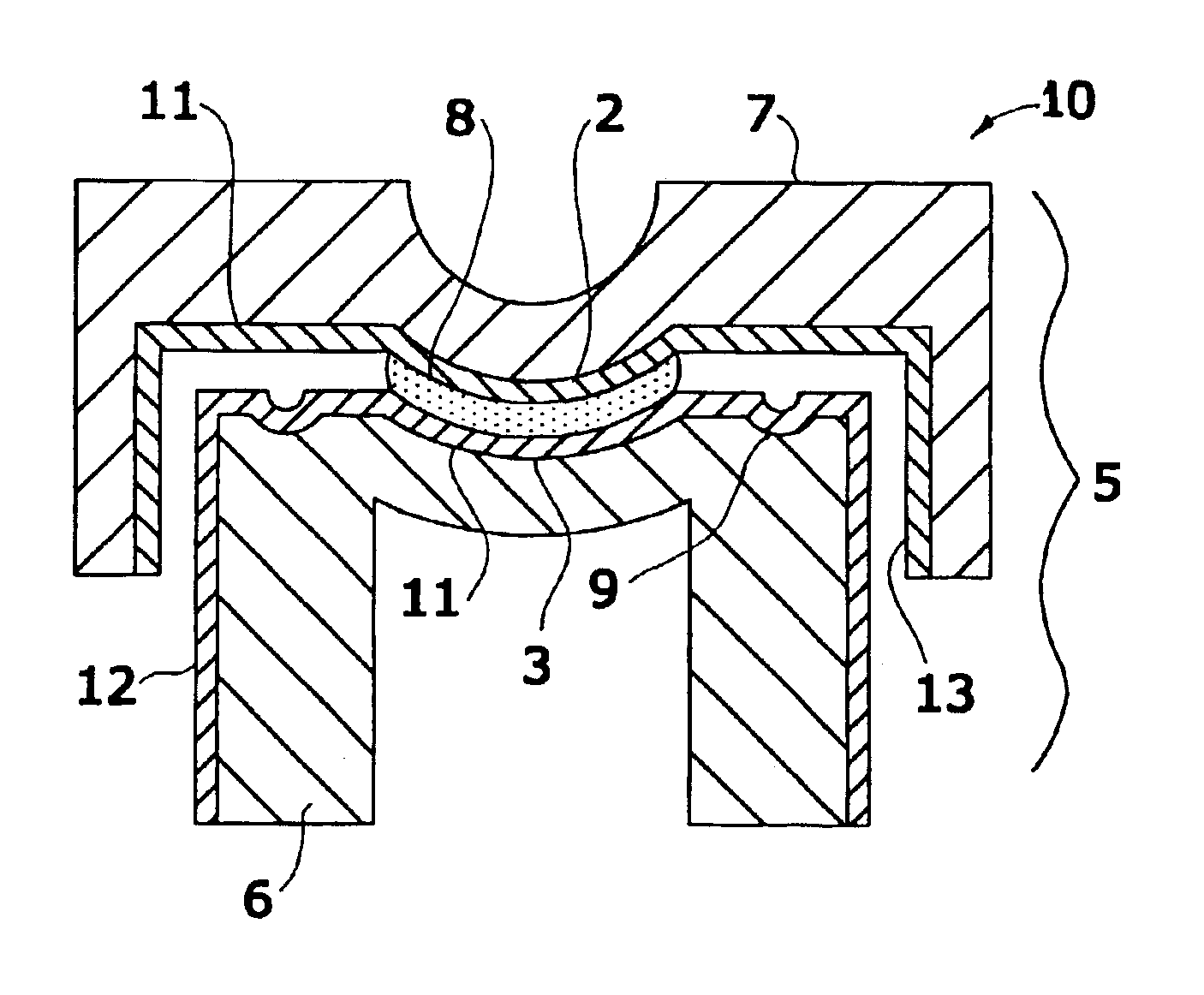Lens molds with protective coatings for production of contact lenses and other ophthalmic products
a technology of protective coating and lens mold, which is applied in the field of lens molds, can solve the problems of limited number of manufacturing tools, high cost of existing clear-resin lens molds, etc., and achieve the effects of enhancing protection against monomer interaction, reducing light transmission capacity, and poor light transmission
- Summary
- Abstract
- Description
- Claims
- Application Information
AI Technical Summary
Benefits of technology
Problems solved by technology
Method used
Image
Examples
example 1
[0036]This Example illustrates the preparation of a contact lens mold with a silicon nitride coating using plasma-enhanced chemical vapor deposition (PECVD). Polystyrene molds were placed in a stainless steel chamber equipped with a capacitatively coupled radio frequency (13.56 MHz) power supply. The chamber was evacuated using a turbo-molecular pump. After pumping down to a base pressure of 10−4 Torr, working gases were admitted using mass flow controllers (MFC). The desired pressure was achieved using a throttle value and a MKS baraton capacitance pressure gauge. The process gases used for the silicon nitride deposition (wherein the ration of silicon to nitrogen was approximately 2.3) included silane and ammonia (SiH4 / NH3) in a 1:4 ratio. The deposition pressure was 80 to 100 mTorr, and the substrate temperature during deposition was approximately 40 to 60° C. The flow rates of SiH4 and NH3 were 10 to 20 and 40 to 80 sccm, respectively. The coating thickness was in the range of 60...
example 2
[0037]This Example illustrates the preparation of a contact-lens mold with a silicon oxide coating using plasma-enhanced chemical vapor deposition (PECVD). Using a setup similar to the setup described in Example 1, a contact lens mold was coated with silicon oxide. The working gases used to obtain the coating was trimethyldisiloxane and oxygen wherein the ratio of trimethyldisiloxane to oxygen was 1:2. The coating thickness was between 600 nm and 1000 nm.
example 3
[0038]This Example illustrates the chemical resistance of plastics coated according to the present invention. Flat samples of amorphous plastics (polystyrene, polycarbonate, and polysulfone) were exposed to one drop of Monomer Mix A and B used for lens casting, respectively a non-silicone soft lens and a silicone soft lens. Monomer Mix A comprised the following components: 2-Hydroxyethyl methacrylate (32 parts), N-vinyl pyrrolidone or NVP (45 parts), 2-Hydroxy-4-t-butylcyclohexyl methacrylate (8 parts), ethyleneglycol dimethacrylate (0.1 parts), methacryloxyethyl vinyl carbonate (0.5 part), glycerine (15 parts), a polymerizable blue tint (150 ppm), and an initiator Darocur (0.2 parts). Monomer Mix B comprised the following components: a polyurethane-polysiloxane prepolymer derived from isophorone diisocyanate, diethylene glycol, α{overscore (ω)}-hydroxybutyl polydimethylsiloxane of molecular weight 4000, and 2-hydroxyethyl methacrylate at the molar ratio of 6:3:2:2 (50 parts), 3-met...
PUM
| Property | Measurement | Unit |
|---|---|---|
| Length | aaaaa | aaaaa |
| Fraction | aaaaa | aaaaa |
| Time | aaaaa | aaaaa |
Abstract
Description
Claims
Application Information
 Login to View More
Login to View More - R&D
- Intellectual Property
- Life Sciences
- Materials
- Tech Scout
- Unparalleled Data Quality
- Higher Quality Content
- 60% Fewer Hallucinations
Browse by: Latest US Patents, China's latest patents, Technical Efficacy Thesaurus, Application Domain, Technology Topic, Popular Technical Reports.
© 2025 PatSnap. All rights reserved.Legal|Privacy policy|Modern Slavery Act Transparency Statement|Sitemap|About US| Contact US: help@patsnap.com


